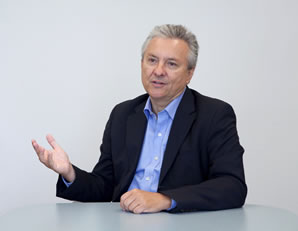In this video from the San Francisco HPC Meetup, Horst Simon from LBNL presents: Usable Exascale and Beyond Moore’s Law.
As documented by the TOP500, high performance computing (HPC) has been the beneficiary of uninterrupted growth, and performance of the top HPC systems doubled about every year until 2004, when Dennard scaling tapered off. This was based on the contributions of Moore’s law and the increasing parallelism in the highest end system. Continued HPC system performance increases were then obtained by doubling parallelism. However, over the last five years HPC performance growth has been slowing measurably, and in this presentation several reasons for this slowdown will be analyzed. To reach usable exascale performance over the next decade, some fundamental changes will have to occur in HPC systems architecture. In particular, a transition from a compute centric to a data movement centric point of view needs to be considered. Alternatives including quantum and neuromorphic computing have also been considered. The prospects of these technologies for post-Moore’s Law supercomputing will be explored.




